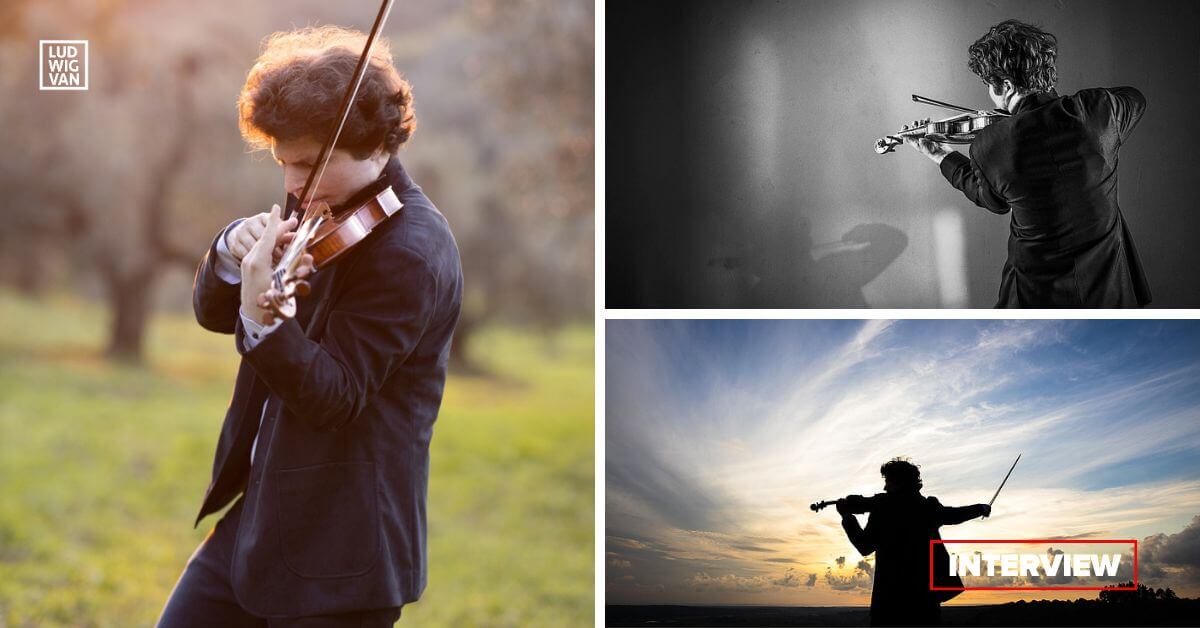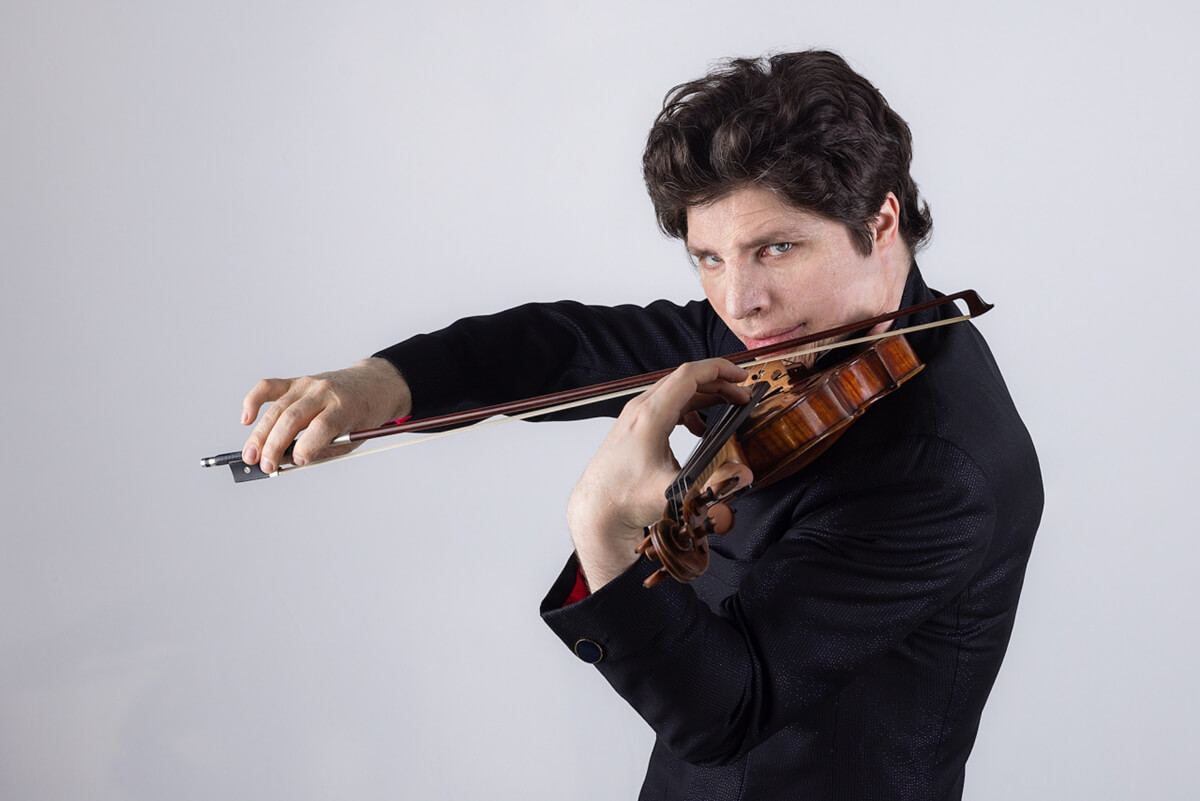
Renowned violinist Augustin Hadelich will be performing in Toronto on October 13 in a recital at Koerner Hall. He’ll be joined by pianist Orion Weiss, a frequent collaborator, in a programme that combines favourites like Beethoven and Prokofiev with newer and lesser known work by John Adams, Daniel Bernard Roumain, and Amy Beach.
It’s a typical mix for the artist, who is known for his broad taste when it comes to repertoire.
Italian-German-American violinist Augustin Hadelich hit the international scene after his first prize win at the International Violin Competition of Indianapolis in 2006, and has since gone on to dazzle audiences all over the world with his gift for technical and interpretive brilliance.
Here’s a look at the musician and a Q&A about his upcoming Toronto concert.
Augustin Hadelich: The Virtuoso
Born in Cecina, Italy to German parents, Augustin Hadelich’s two older brothers were already playing instruments (the cello and piano) as he grew up. His own musical education began at the age of 5.
His early studies came in the form of lessons and masterclasses from violinists who would tour near the family farm in Tuscany.
As a teenager, he studied violin at the Instituto Mascagni in Livorno, where he graduated summa cum laude. He went on to study at The Juilliard School, where he graduated in 2007. He won the first prize at the International Violin Competition of Indianapolis in 2006 while still a student.
He’s been performing with the world’s symphonies since 2010, including the New York and Los Angeles Philharmonic, Vienna Symphony, and Seoul Philharmonic, among many others, as well as building a career as a recording artist. Augustin has also gone on to earn many other awards, including four Grammy Award wins, three for Classical Instrument Solo.

Augustin Hadelich: The Q&A
LvT: When did you know that the violin was your instrument — how old were you?
AH: I started playing when I was five, but did not choose the violin. I wanted to make music, because I heard my older brothers practising the cello and piano, and then my parents gave me a violin.
The violin sounds pretty bad when you first start playing it. So it was only a few years later that I realized it was my favourite instrument, once i realized how beautiful it can sound. It can sing like a human voice.
I later started playing the piano as well, and spent a long time at the piano, but that was more because I liked so much of the piano repertoire. The violin was always my main instrument.
LvT: What drives you at this point in your career? Is there a particular project or passion that you are working on currently?
AH: I am enjoying every performance that I get to play in front of audiences again, after the difficult time of the pandemic. Orion Weiss and I will soon record an album of American music, which is why we are featuring 3 pieces on our program in Toronto (in addition to Beethoven and Prokofiev)
LvT: Tell us about the violin you play — the 1744 instrument by Giuseppe Guarneri del Gesù, known as “Leduc, ex Szeryng”, on loan from the Tarisio Trust. What does it do for your performance to have an instrument like it?
AH: The del Gesù violin that I’ve now been playing on for almost four years is very special. The sound it produces has a warmth and complexity that I have rarely heard in any instrument.
This violin was for many years the violin of Henryk Szeryng — so I actually listened to it quite a lot when I was a child, listening to old recordings. And I remember seeing a poster of the violin when I was a student (Strad Magazine used to have these centrefolds of famous violins— kind of a funny concept, but you could collect posters of great violins that way)
The violin inspires me every day that I play on it with its sound. I did have to change the way I play quite a bit to suit the instrument — that’s usually the case, that the player has to adapt to the violin a lot.
LvT: In your recording history, and in the programme for the upcoming concert, the repertoire is quite diverse — from traditional to new music. What draws you to a specific piece to the point you will include it in a concert programme?
AH: I like programs with a lot of variety and contrast. One often finds surprising and unexpected connections between works- and I feel that each work shines more because it is heard next to something so different.
Life is too short to play music I don’t like! Luckily, there is so much fascinating music written for the violin that it is possible to create an almost unlimited number of good programs. I am a bit bored with programs consisting just of 3-4 well-known sonatas — I like mixing the well-known with the more obscure, and I have fun seeing what surprising and refreshing stylistic contrasts I can create.
We start with Beethoven’s tenth sonata, a work that already lets us glimpse his late period. I’m not sure I can even describe this piece- it is hard to imagine that a human being could create music like this.
The second work on the program, John Adams’ Road Movies, couldn’t be more different. This three-movement piece that is all about the joys of driving. The minimalist textures he creates sound just like turning wheels. The first movement (“Relaxed Groove”) is a drive along a familiar road — there are some potholes in the road, so it’s not always a smooth ride, and it reminds Orion and me of the pitted roads around New Jersey and New York that we often drive on. The second movement is slow and languid, moving only in spurts just like, perhaps, a traffic jam on a hot summer day? The last movement moves at a very fast — maybe like a German highway!
Orion and I have been playing this piece for a few years, and I must confess it is always the work I look forward to the most on every program— playing it is exhilarating.
The second half of the program takes a darker turn. It begins with Daniel Bernard Roumain’s “Filter”, a written out, gritty solo violin improvisation inspired by Jimi Hendrix, in which I imitate the distortion of electric violin/guitar on my violin. It is an adrenaline rush, both fun and dangerous.
Prokofiev’s first sonata is hard-core in a very different way — brooding, mysterious and intense, it explores deep wells of feeling. After a long and moving journey, it ends with a profoundly troubled, conflicted F Major.
After all this darkness and conflict, the audience is rewarded with Amy Beach’s lovely romance, a tender and warm piece which will feel like a ray of sunshine.
- Tickets and more information about the October 13 concert at Koerner Hall [HERE].
#LUDWIGVAN
Get the daily arts news straight to your inbox.
Sign up for the Ludwig Van Toronto e-Blast! — local classical music and opera news straight to your inbox
HERE.
- INTERVIEW | Composer Ari Kinarthy And Director Jeff Lee Petry Talk About Ari’s Theme, Premiering At Hot Docs - April 26, 2024
- PREVIEW | Creators & Performers Natalya Gennadi And Kristine Dandavino Talk About Grandma’s Shawl - April 26, 2024
- PREVIEW | Artistic Director Emily Cheung Dives Into Little Pear Garden Dance Company’s History & 30th Anniversary Peformance - April 26, 2024



